In 1848, rongoā (traditional Māori medicine) was still widely practiced. Community members who fell ill or were wounded were treated by tohunga (healers), who utilised remedies and techniques developed and shared through generations. Similar to those patients who stayed home and were cared for in the community after the earthquakes, Māori medical practices are heavily whanau and community based.
Take a look around you. You are also surrounded by the plants which were the mainstay of rongoā. Walk through the New Zealand garden and seek out the native plants that contributed to rongoā practice. Look for harakeke, the koromiko and the kowhai, the Manuka tree and the Kawakawa (pepper tree). These natural remedies offered up by the whenua were utilised against an array of illnesses and injuries.
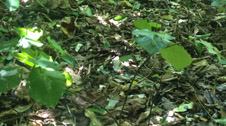 Kawakawa has vivid green leaves, almost heart shaped. The leaves of this tree may be used as a poultice on boils, and were often utilised in the treatment of gonorrhoea and syphilis. Chewing kawakawa shoots also provided relief from cough and toothache, and commonly was and is used for huango (asthma).
Kawakawa has vivid green leaves, almost heart shaped. The leaves of this tree may be used as a poultice on boils, and were often utilised in the treatment of gonorrhoea and syphilis. Chewing kawakawa shoots also provided relief from cough and toothache, and commonly was and is used for huango (asthma).
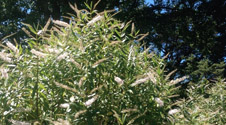 Koromiko, which you may know as hebe, can be used by tohunga for both medicinal and spiritual purposes. A tea made from the boiled leaves of koromiko could be put to effective use against dysentery (and would be useful had you drunk the tap water in the few weeks post-quake). You may imagine yourself standing in a river, sprig of koromiko in hand, while the tohunga recites incantations to rid you of your ailment.
Koromiko, which you may know as hebe, can be used by tohunga for both medicinal and spiritual purposes. A tea made from the boiled leaves of koromiko could be put to effective use against dysentery (and would be useful had you drunk the tap water in the few weeks post-quake). You may imagine yourself standing in a river, sprig of koromiko in hand, while the tohunga recites incantations to rid you of your ailment.
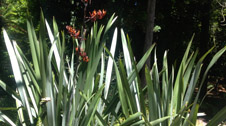 Harakeke in particular is a native plant with a large repertoire of uses, and as you exit the NZ Garden you may follow the signs and head North-East to the Visitor Centre and Ilex Café, where there is more information on the myriad uses for this versatile flax.
Harakeke in particular is a native plant with a large repertoire of uses, and as you exit the NZ Garden you may follow the signs and head North-East to the Visitor Centre and Ilex Café, where there is more information on the myriad uses for this versatile flax.
Rongoā is not as prevalent now as it was in the time of the Kemp purchase, a direct result of colonisation. This is due partially to the loss of land that bore the plants of rongoā, as well as the transformation of purpose for the land, for example land which once had an abundance of kawakawa and harakeke may now be pasture for cattle or sheep. Alongside this, the Tohunga Suppression Act of 1907 forced many rongoā practices underground. This act was repealed in 1962, and rongoā has experienced something of a resurgence. Today you may see both Māori and non-Māori patients who utilise rongoā for management of chronic illnesses such as asthma or everyday ailments, like headaches.
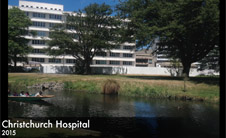 The health of all Cantabrians was affected by the earthquakes. Physical injuries sustained in the quakes were followed by gastrointestinal diseases from contaminated water supplies. The psychological, and emotional stresses then began to make themselves apparent from months to years after the initial events. The people of Christchurch were forced to adjust to a whole new way of life: many houses and workplaces became transitional, there was constant fear of future quakes and aftershocks, the stress of dealing with insurance companies, and the complete adjustment of lifestyle for those left with permanent injuries causing disability.
The health of all Cantabrians was affected by the earthquakes. Physical injuries sustained in the quakes were followed by gastrointestinal diseases from contaminated water supplies. The psychological, and emotional stresses then began to make themselves apparent from months to years after the initial events. The people of Christchurch were forced to adjust to a whole new way of life: many houses and workplaces became transitional, there was constant fear of future quakes and aftershocks, the stress of dealing with insurance companies, and the complete adjustment of lifestyle for those left with permanent injuries causing disability.
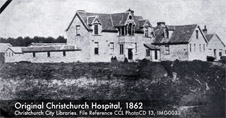 Here in the Christchurch Botanic Gardens we are in close proximity to the Christchurch Hospital, which is the largest centre for healing in Canterbury. Christchurch Hospital was built in 1862, only 14 years following the signing of Kemp's Deed. The population of Christchurch at this time was around 2000 people. At the time of opening, most people had to pay for services from the Christchurch Hospital unless they were especially poor. The hospital remained semi-operational following the earthquakes to provide care for those in dire need. Many cases that normally would have come in for treatment in the hospital were managed at home, to take the strain off the system.
Here in the Christchurch Botanic Gardens we are in close proximity to the Christchurch Hospital, which is the largest centre for healing in Canterbury. Christchurch Hospital was built in 1862, only 14 years following the signing of Kemp's Deed. The population of Christchurch at this time was around 2000 people. At the time of opening, most people had to pay for services from the Christchurch Hospital unless they were especially poor. The hospital remained semi-operational following the earthquakes to provide care for those in dire need. Many cases that normally would have come in for treatment in the hospital were managed at home, to take the strain off the system.
In exploring more of Ōtautahi, you may begin to recognise a number of the native trees and plants we have just discussed. This is due in large part to the work of Ngai Tahu, yet another element of the history of this land that has been reincorporated into the urban environment. While many people may simply be aware of the presence of a tree or plant, to a member of Ngai Tahu or Ngai Tūāhuriri, seeing a tree or plant that they can recall for its healing properties, knowing its use to their ancestors, can transform the meaning of a space, and reaffirm their belonging to this whenua.
